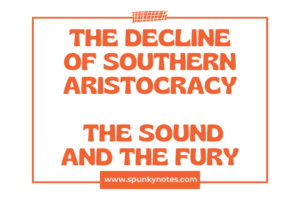

Estimated Reading Time: 5 min
Q. Critically evaluate the poem A Stone I Died written by Rumi.
A stone I died and rose again a plant;
A plant I died and rose an animal;
I died an animal and was born a man.
Why should I fear? What have I lost by death?
In Rumi’s poem “A Stone I Died,” the speaker describes a series of transformative deaths, each representing the shedding of a different aspect of self.
Initially, the speaker dies as a mineral, transcending the rigid, inanimate state of a stone. Next, the speaker dies as a plant, leaving behind the passive growth and dependency on external nourishment. The speaker then dies as an animal, moving beyond instinctual drives and desires.
Finally, the speaker dies as a human, letting go of ego, attachments, and the illusion of a separate self. Through these deaths, the speaker undergoes a spiritual evolution, ultimately reaching a state of pure consciousness and unity with the divine.
The poem emphasizes the importance of letting go of attachments and embracing transformation to attain spiritual enlightenment.
Explanation of A Stone I Died
Rumi’s poem offers a profound and comforting perspective on death and transformation. It reassures us that death is not an end but a transition to a higher state.
With this, we can overcome our fear of death and appreciate the eternal and dynamic nature of the soul’s journey. This insight encourages us to live fully and embrace each stage of life as an opportunity for growth and spiritual evolution.
A stone I died and rose again a plant;
This illustrates the concept of transformation and rebirth. The stone, which seems lifeless and inert, undergoes a significant change and becomes a plant, symbolizing growth and new life.
This transformation signifies that death is not an end but a transition to a new state of existence. Rumi highlights the idea of spiritual rebirth and renewal by rising again as a plant.
The transformation from a stone to a plant also emphasizes the journey from a stagnant, unchanging state to growth and vitality.
This change symbolizes the soul’s awakening to a higher consciousness and the start of a spiritual journey. The plant, rooted in the earth but reaching the sky, represents a physical and spiritual connection.
A plant I died and rose an animal;
Here, the plant, which is alive but stationary, transforms into an animal, representing a higher level of consciousness and mobility.
This change highlights the progression of life forms and the continuous evolution of the soul. Each stage of life brings new abilities and experiences, suggesting a journey of constant growth and development.
In the second part, Rumi describes his ascension to a higher state of being, symbolized by an animal. Animals are more complex, mobile, and aware than plants, indicating growth and greater awareness.
This transformation suggests an evolution in consciousness and spiritual development, moving from a basic, rooted existence to a more dynamic, aware, and advanced state.
I died an animal and was born a man.
It is the next stage in Rumi’s journey. This transformation from animal to human signifies the arrival of a higher state of awareness and intellect.
Humans have the unique ability to reflect, reason, and seek spiritual understanding. This progression underscores the idea that each life form has its purpose and place in the grand scheme of existence.
This metaphorical death and rebirth symbolize personal growth and spiritual awakening. He embraces human qualities by overcoming his basic instincts, including empathy, wisdom, and a connection to the divine.
Rumi illustrates the path toward achieving a more enlightened and meaningful existence. This process highlights the importance of inner transformation in reaching a higher, more refined state of being.
Why should I fear? What have I lost by death?
Rumi then asks, “Why should I fear? What have I lost by death?” This rhetorical question challenges the common fear of death. Each stage of transformation has led to a more advanced and enriched form of existence.
Rumi argues that death is not something to be feared. Instead, it should be viewed as a natural and necessary part of the soul’s journey toward greater enlightenment.
Rumi‘s words imply that the soul’s true essence and spiritual treasures remain untouched by death. The physical body may perish, but the soul continues its eternal journey, connecting with the divine.
By understanding this, we can live without fearing death, embracing each moment fully, and appreciating the spiritual growth that life and death bring. This outlook transforms our fear into acceptance and peace.
The poem emphasizes that with each death, nothing is truly lost. Instead, each death is a doorway to a new beginning, a higher level of existence.
This cyclical process of dying and being reborn reflects the spiritual belief in the immortality of the soul and its continuous journey through different forms and experiences. The soul is constantly evolving, learning, and growing.


